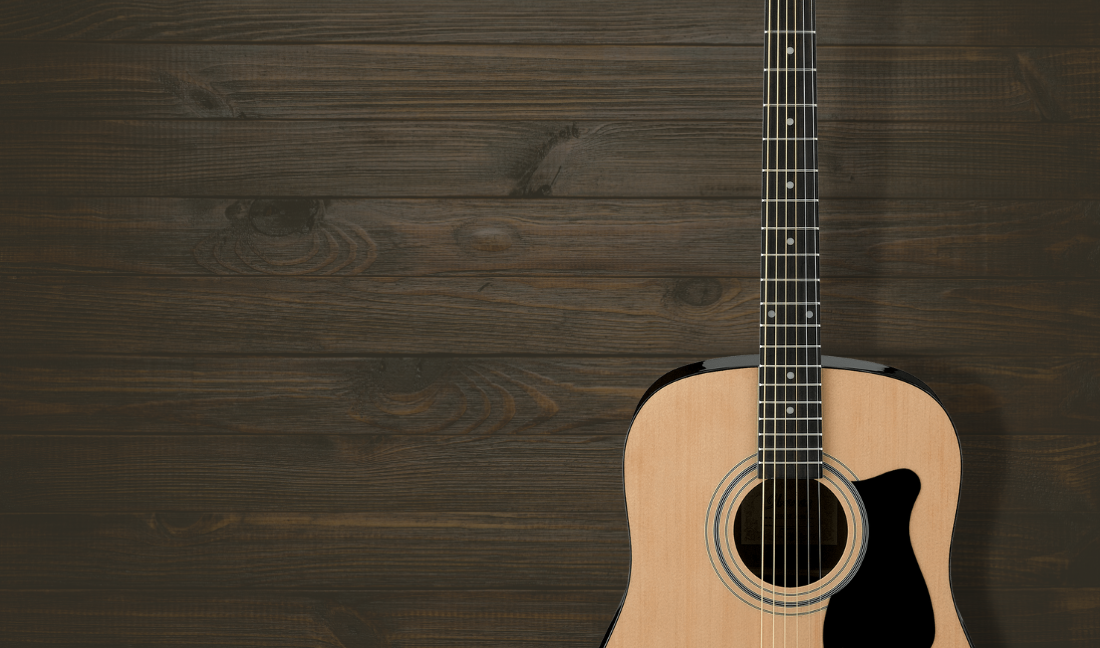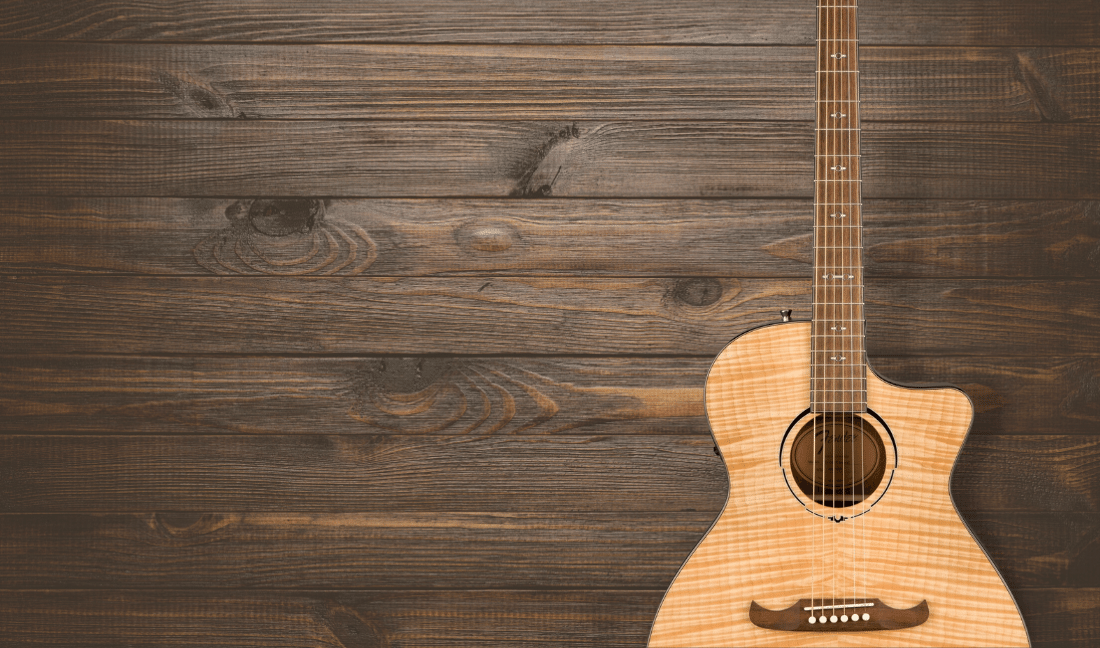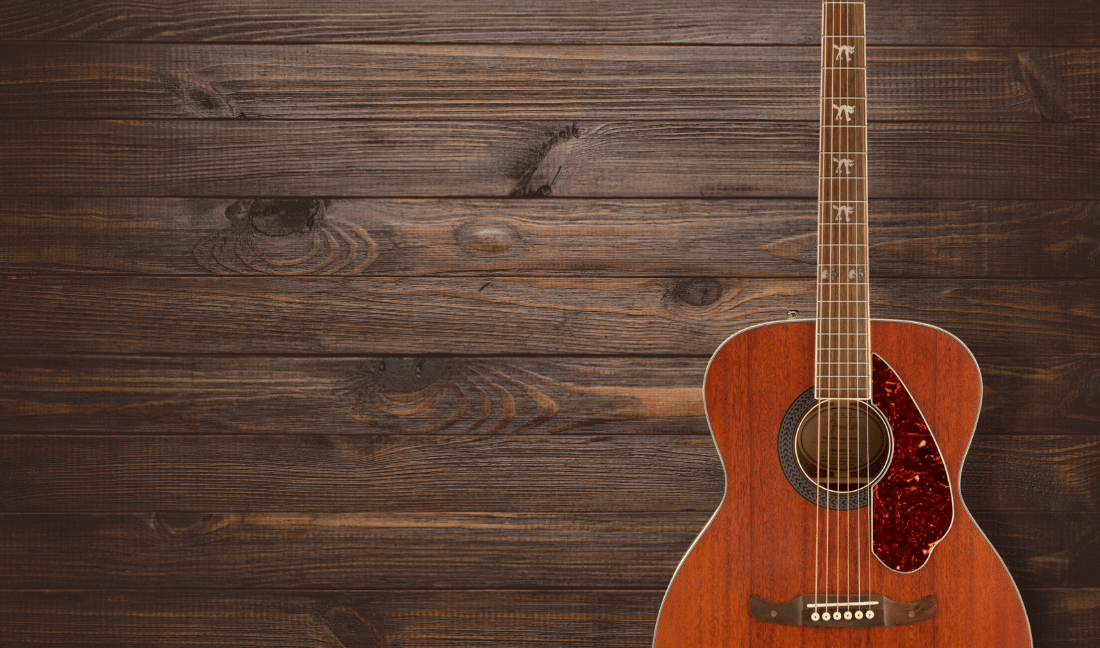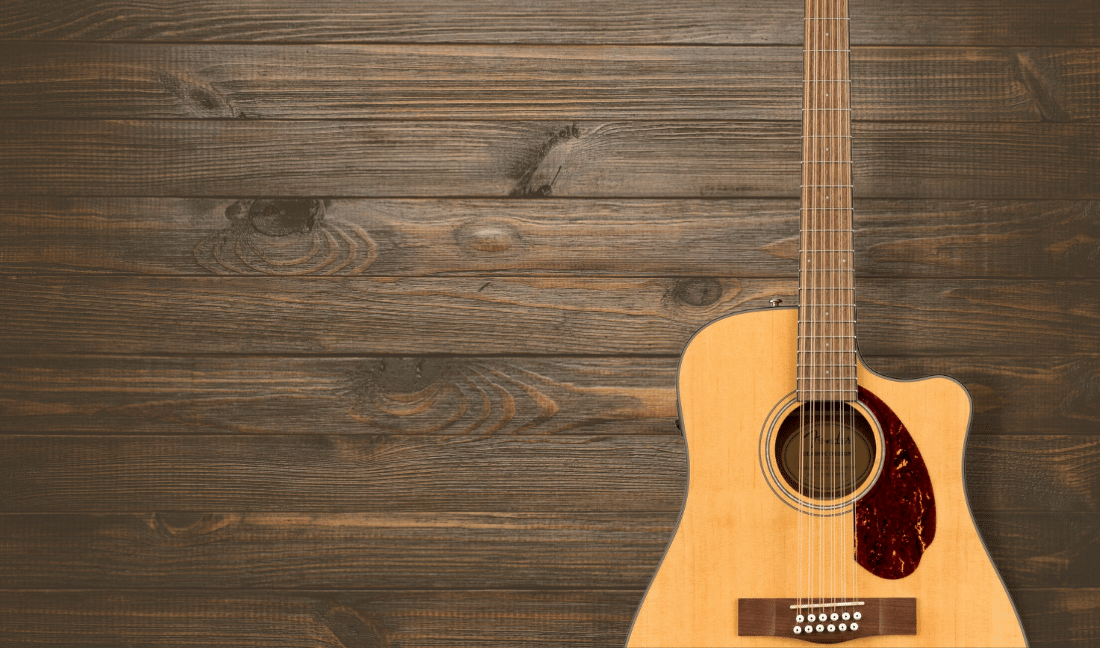This Ibanez IJV50 is a quality acoustic guitar that offers great value for its price tag.
It features a non-cutaway body with a top made of laminate spruce, back and sides made of agathis, high gloss body finish, a mahogany neck with a adjustable truss rod, and chrome hardware plating.
You can purchase this guitar in many different stores, some of them include:
We may earn commissions from these links at no additional cost to you
In this post, we’ll take a close look at the Ibanez IJV50 acoustic guitar, in specific, its features, tone, value, and playability.
We’ll help you understand what each guitar feature that we mention means and how it affects the overall sound or playability of the instrument.
Table of Contents
Summary
Here’s a brief, simplified summary of what we observed about the Ibanez IJV50.
Just so you are aware, we gave the score and rating based on our own opinion, which is subjective.
Hardware
The many metal and plastic elements that make up a guitar are referred to as the instrument’s hardware.
These include but are not limited to:
- Tuning machines
- Pickguard
- Bridge
- Strings
- Strap buttons
- Pickups
- Tailpiece
- Control knobs
Although most people associate the word “hardware” with electric guitars, it may also apply to acoustic guitar parts.
When buying a guitar based on its hardware, be sure it’s of decent quality and will last a long time.
Lower-quality guitars, for example, frequently have plastic saddles on the bridge, which can degrade the instrument’s tone and intonation while also making it more difficult to tune.
Also, check sure that the metal pieces themselves are not prone to rusting or tarnishing, and that they appear to be strong, durable, and not easily damaged.
Good hardware is required for a good-sounding and playable guitar, and there are a few things a manufacturer can do to make it ideal for us.
Let’s investigate further!
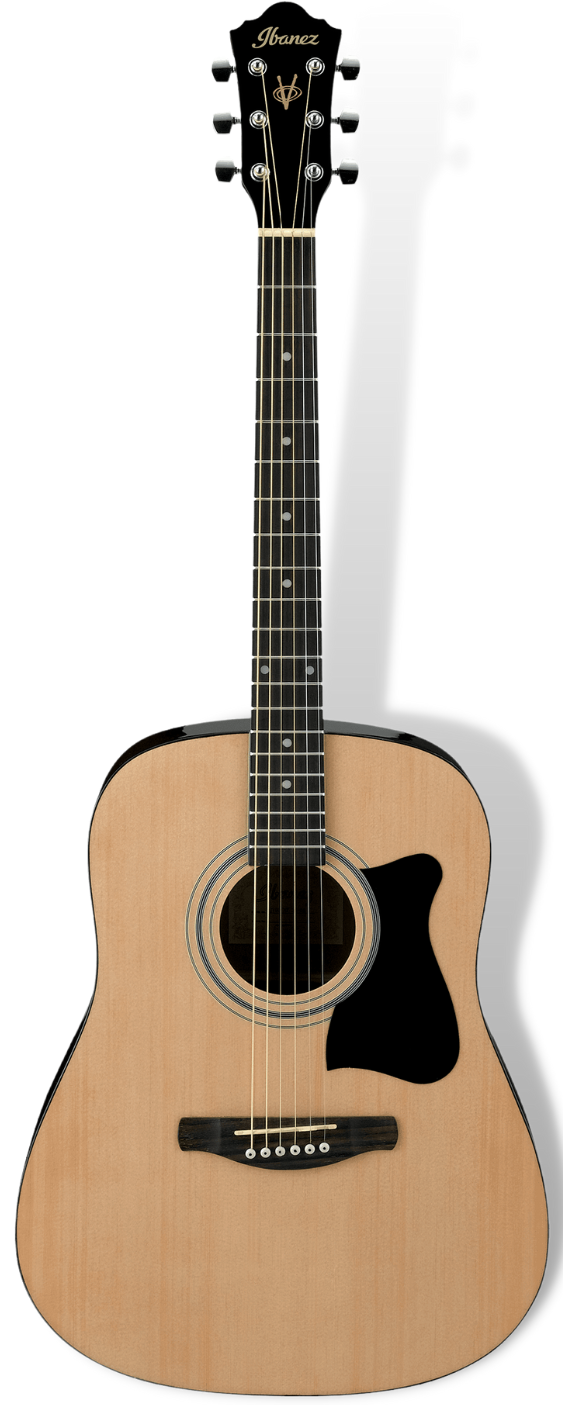
– Tuning Machines
On this Ibanez IJV50, the tuning machines are die cast, made of chrome, and have a classic solid surface design.
- Material: Chrome
- Design: Classic solid surface
One of the most significant pieces of any guitar’s hardware is the tuning machines (commonly referred as “tuners”).
They’re in charge of keeping the strings tight and firm so they can vibrate properly and produce the right pitch.
Low-quality tuning machines can cause your guitar to quickly fall out of tune and be difficult to tune.
They can also make changing the strings more hard, as well as making playing the guitar more difficult in general.
Must Remember:
Good tuning machines are composed of durable, long-lasting materials and operate with accuracy and precision.
You should search for materials that are less susceptible to rust, such as nickel-plated steel or stainless steel.
These materials are also less prone to tarnish, ensuring that your guitar maintains its appearance for a longer period of time.
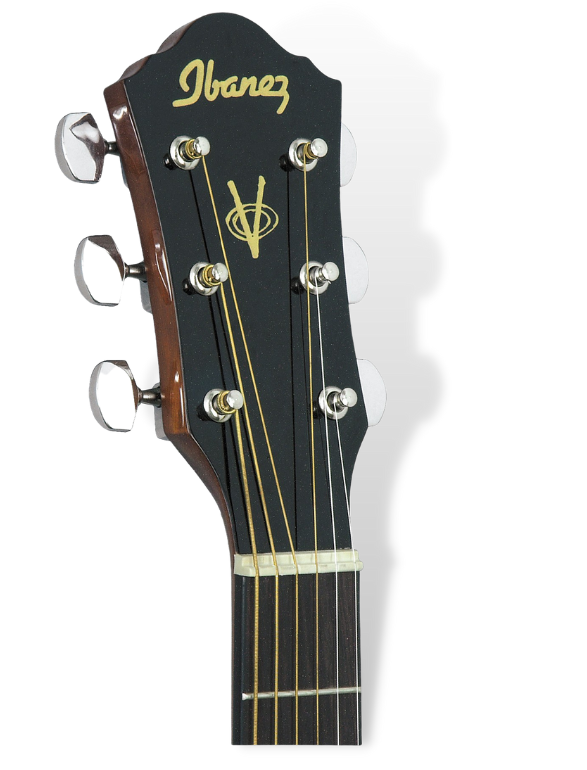
– Pickguard
The Ibanez IJV50 comes with a black pickguard with a plain design.
- Color: Black
- Design: Plain
The pickguard is a little piece of plastic or metal positioned near the strings on the body of the guitar.
Its aim is to prevent the pick from scratching the guitar’s finish as you play.
Most pickguards are constructed of plastic or metal, in some cases, even carbon fiber, and there are a variety of styles to choose from.
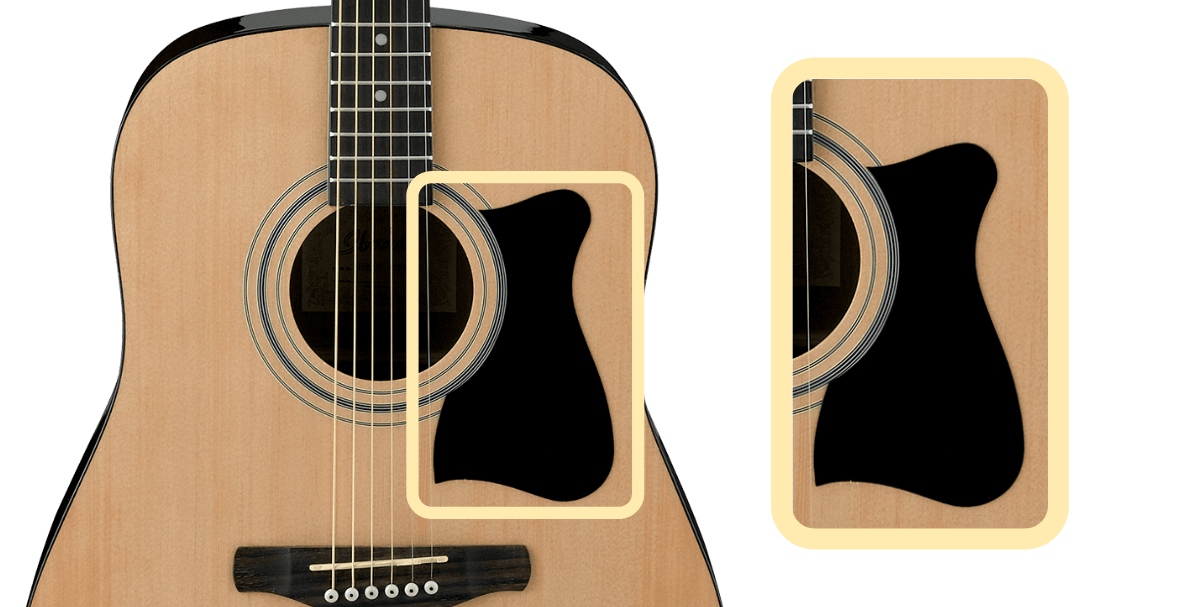
When it comes to pickguards, durability is an important factor to consider; they should be made of a strong material that can withstand regular use.
It also needs to be in a position where it’s likely to actually protect the body of the guitar from scratches caused by the player’s pick.
As for looks and style, a pickguard should also complement the overall aesthetic of the guitar.
It shouldn’t be too noticeable, but it shouldn’t also be so small or low-quality that it looks out of place.
– Strap Buttons
For some reason, the Ibanez IJV50 only comes with one strap button, so you’d have to install the second one if you want.
- Material: Standard Chrome
- Position: Bottom
- Design: Classic
Strap buttons are those little metal buttons installed on the guitar’s body that are used to secure a strap to the instrument.
Most guitars will have two strap buttons, one on each side of the body.
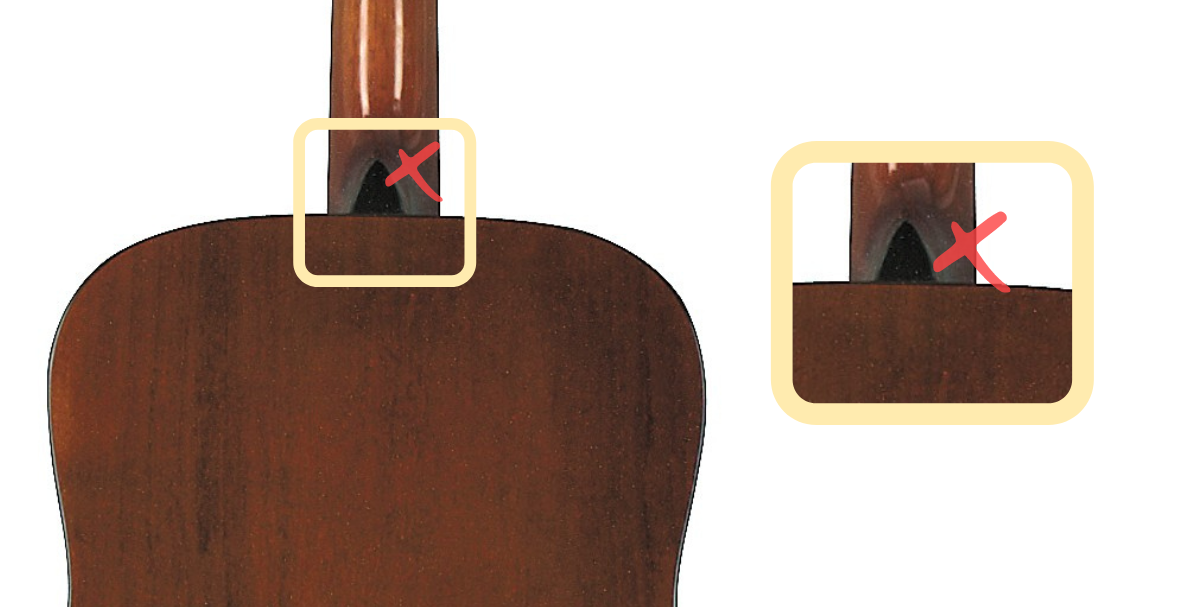
Metal strap buttons should be durable and strong so they don’t come free over time.
Even though the quality of the strap buttons isn’t a deal-breaker for most individuals, it’s still something to consider.
Body
The neck, bridge, and strings are all linked to the guitar’s body.
This is where you’ll notice a hole (the “soundhole”) through which sound can resonate from within the instrument.
The majority of guitars have a wooden body, while others have carbon fiber, metal, or plastic bodies (less usual).
– Wood
If you’re seeking for a specific tone, the type of wood chosen for the body might impact the sound of the guitar.
The Ibanez IJV50 has a laminate spruce top with a agathis back and agathis sides.
– Finish
The final layer of protection for the guitar body’s wood is the body finish.
When it comes to this guitar in specific, it has a high gloss finish.
It’s what gives the guitar its luster and shine, and also protects the wood from scratches, dents, and other scratches.
There are a variety of finishes to choose from, including:
- Polyurethane
- Nitrocellulose Lacquer
- Polyester
Nitrocellulose Lacquer is considered to be the best type of finish, but it’s also the most expensive.
It’s a durable finish that can be buffed to a high shine, and it’s also relatively easy to repair if it’s damaged.
Polyurethane is a cheaper alternative that’s almost as good, and Polyester is the cheapest option but it doesn’t provide as much protection.
Among these categories, there are subcategories as well, such as:
- Gloss finishes: High shine and they’re very reflective.
- Matte finishes: Have a lower shine and they’re not very reflective.
- Satin finishes: Somewhere in-between gloss and matte, they have a moderate shine and they’re somewhat reflective.
– Colors Available
The color of a guitar’s body is typically not a significant factor in the overall tone.
However, it can be a factor in the look and feel of the instrument.
Some individuals like a certain color guitar because it complements their aesthetic or because it’s easier to see in low light conditions.
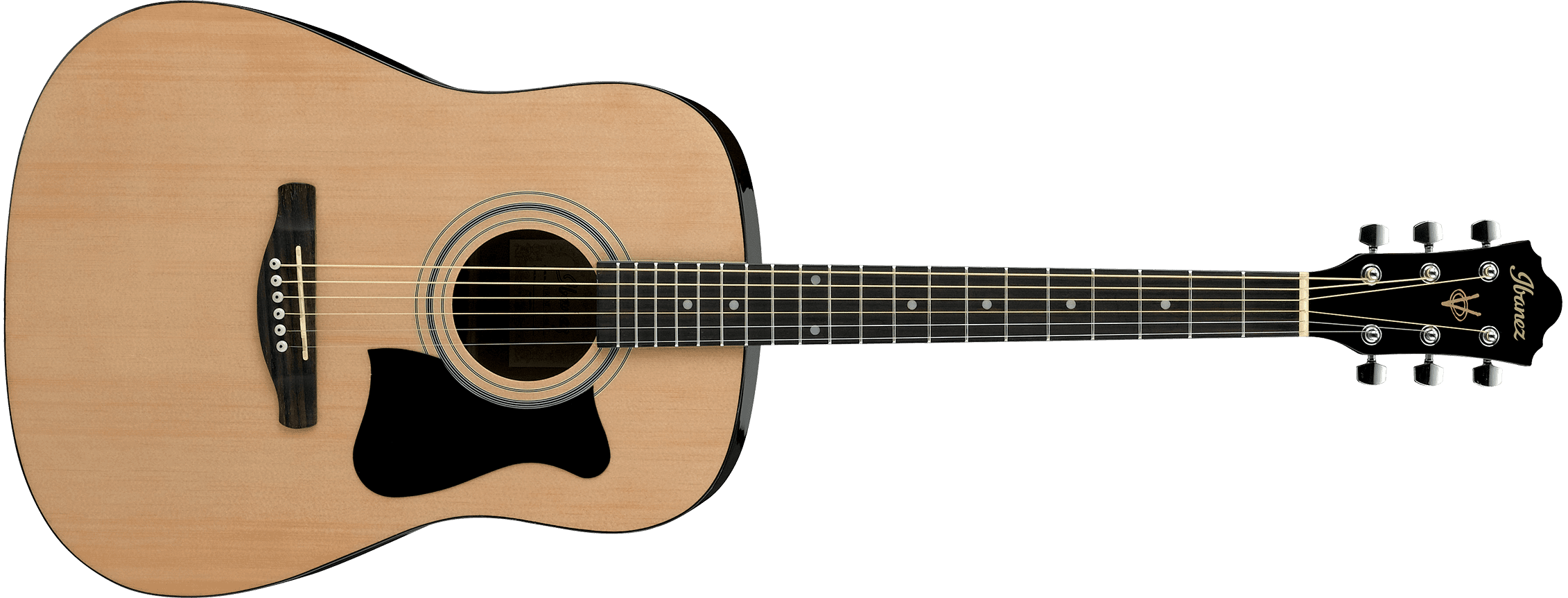
Some of the most popular colors for guitar bodies are:
- Natural: This is the color of wood that hasn’t been stained or painted.
- Black: Black is a popular color for metal-style guitars.
- Sunburst: Sunburst is a combination of light and dark colors, usually red, yellow, and brown.
– Bridge, Saddle, and Pins
The Ibanez IJV50 has a standard pin bridge with cream-colored plastic pins and a saddle made of ivorex ii.
Each one of these components plays an important role in how the guitar sounds and feels.
For example, the bridge is responsible for transferring the vibrations of the strings to the body of the guitar.
The saddle, which is often composed of plastic or bone, is where the strings rest.
And the pins are what hold the strings in place.

There are many different types of bridges, each with its own advantages and disadvantages.
There are three primary types of bridges on acoustic guitars:
- Pin bridges (standard)
- Pinless bridges
- Classical bridge
Pin bridges are the most common type of bridge, and they’re also the easiest to replace.
However, they can be more difficult to intonate, which involves getting the strings in a precise position and tuning them.
Pinless bridges are less common, although they are easy to intonate as well.
They also have the benefit of not requiring any pins, which may be difficult to keep track of.
Finally, classical guitar bridges are only found for the most part on classical guitars.
They are fairly similar in design to most other bridges, but the key distinction is that they have no pins and instead consist of a saddle and a wooden block with a hole for each string.
This hole is used to secure the string, giving the guitar a much cleaner appearance.
Now, the sort of saddle you have is also crucial; plastic saddles are the least expensive and simplest to buy, but they do not last as long as bone saddles.
The cost of bone saddles is more, but they are also more durable.
As for the bridge pins, there are three main types:
- Plastic bridge pins
- Steel bridge pins
- Brass bridge pins
Plastic bridge pins are the cheapest and easiest to find, but they’re also the least durable.
Steel bridge pins are more expensive, but they’re also more durable.
Brass bridge pins are the most expensive, but they’re also the most durable.
Neck
When it comes to the Ibanez IJV50, its neck is made of mahogany and has a V shape with an adjustable truss rod.
The neck is the long thin part of the guitar that extends from the body to the headstock and is generally made of wood.
The type of wood that’s used for the neck can affect the guitar’s playability and sound since different woods have different properties and impact the way that the vibrations produced by the strings behave.
The bolt-on neck, which is screwed or bolted onto the guitar body, is the most common type.
Set-necks, which are glued to the body, are another popular style.
Guitar necks have a few important parts, which include: the fretboard, the frets, the nut, and the truss rod.
Fretboard
The fretboard is the area on the guitar’s neck where your fingers press against the strings.
It’s usually made of wood, but it can also be made of other materials like plastic or even metal.
The Ibanez IJV50 has a fretboard made of rosewood with pearloid dots inlays:

Despite the fact that this has traditionally been a point of controversy, it is widely accepted that the type of wood used for the fretboard might have a small impact on the sound of the guitar.
For example, maple is a popular choice for electric guitars because it gives the instrument a bright, sharp cutting tone.
Rosewood is another popular choice, and it is frequently used on acoustic guitars because it produces a warm, full-bodied tone.
Ebony is another popular choice, and it’s frequently used on guitars meant to have a very bright, clear sound.
There are several varieties of fretboards available, each with its own set of pros and cons.
The type of fretboard you pick is ultimately up to you and what you’re looking for in a guitar; the tone will not change dramatically, but the feel might.

Brand Info
Ibanez is another top guitar brand that has its roots in Japan.
The company started out as a steel-string acoustic guitar manufacturer, but it quickly became known for its innovative electric guitars.
Ibanez is particularly well-known for its 7- and 8-string models, which are perfect for metal and hard rock players.
They also have a wide range of different models to suit every budget and every playing style.
Among some of them are their many acoustic guitars, which are well-crafted and provide great value for money.

Videos
For those of you who want to get a more in-depth look at this guitar, we’ve included some videos below.
The first video is a demo showing off how it sounds and looks.
While the second video is a review that goes over some of its features and specs.
Demo
Review
Specifications
A guitar’s specifications can tell you a lot about the instrument, and they can be helpful when you’re trying to decide between different models.
Below, we’ve included the specifications for the Ibanez IJV50:
– General
| Brand | Ibanez |
| Model | IJV50 |
| Type | Acoustic |
| Size | Full Size |
| Colors | Natural |
| Number of Strings | 6 |
| Hardware Plating | Chrome |
| Tuning Machines | Die Cast |
| Electro-acoustic | No |
| Built-in Tuner | Not applicable |
– Body
| Body Style | Dreadnought |
| Cutaway | No |
| Solid Top | No |
| Top Material | Laminate Spruce |
| Back Material | Agathis |
| Sides Material | Agathis |
| Finish Type | High gloss |
| Pickguard | Yes |
| Pickguard Design | Plain |
| Strap Buttons | Yes |
| Strap Buttons Position | Bottom |
| Strap Buttons Design | Classic |
– Neck
| Neck Material | Mahogany |
| Neck Shape | V |
| Scale Length | 25.6″ |
| Truss Rod | Adjustable |
– Fretboard
| Fretboard Material | Rosewood |
| Fingerboard Inlay | Pearloid dots |
| Number of Frets | 20 |
– Bridge, nut, saddle, pins
| Bridge Design | Standard pin bridge |
| Pin Color | Cream |
| Pin Material | Plastic |
| Bridge Material | Rosewood |
| Saddle Material | Ivorex II |
| Nut Material | Ivorex II |
| Nut Width | 1.65″ |
Please note that some brands might change the type of materials that they use on their guitars.
This can be because of new regulations and laws that come and go throughout the years.
If you see a mistake in any of these specifications, please let us know and we’ll correct it.
You can reach out to us via our email: [email protected]
I also encourage you to check out our other guitar reviews if you’re looking for something specific that you might have not found here with this guitar.
There are a lot of great guitars out there, and it can be tough to choose the right one sometimes.
We have reviews on electric guitars, acoustic guitars, bass guitars, effects pedals, and more.
No matter what your budget is, or what type of guitar you’re looking for, we should be able to help you find the perfect one for you.

Born and raised in Florida! I’ve been playing guitars for the past 5 years. Love to learn, and I’m always striving to achieve greater heights in music. Currently have a Fender Stratocaster as my main guitar.

